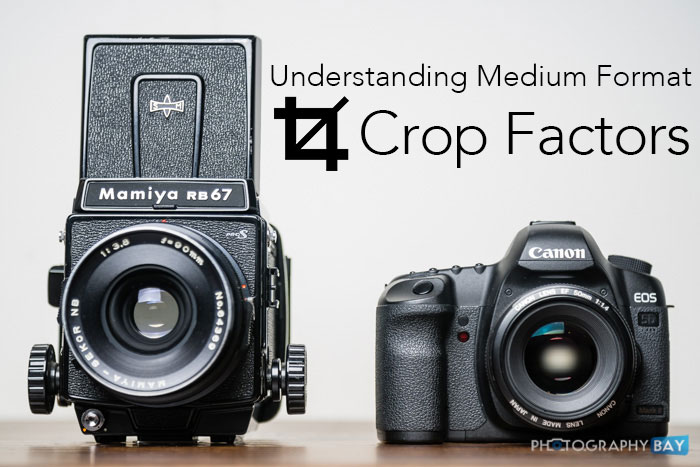
Anyone that’s shot a DSLR in a remotely serious manner is aware of the crop factor for APS-C format cameras when compared to their full frame cousins. Nikon and Sony APS-C cameras yield a 1.5x crop factor, while Canon APS-C cameras have a 1.6x crop factor.
And, invariably, if you use the phrase “crop factor,” someone is going to yell at you and tell you that you aren’t cropping anything. However, the term is ubiquitous in identifying the altered field of view caused by using smaller sensors in cameras along with full frame lenses.
We also commonly use the phrase “equivalent focal length” to describe the change in the field of view as captured by an APS-C sensor. For instance, the popular Canon EF 50mm f/1.8 lenses have an 80mm equivalent focal length when used with a Canon Rebel series camera. Of course, most of us understand that this is a misnomer and that the 50mm lens does not change at all to become an 80mm lens when used on a different camera. It is simply that the 50mm lens has a narrower field of view on the Canon Rebel DSLR thanks to the smaller sensor.
Crop Factors on Medium Format Cameras
For those coming from a digital world to test the film waters with medium format cameras, the 35mm crop factor for medium format lenses and film types can be confusing when a 50mm lens can be ultra-wide and a 90mm lens is considered a normal lens.
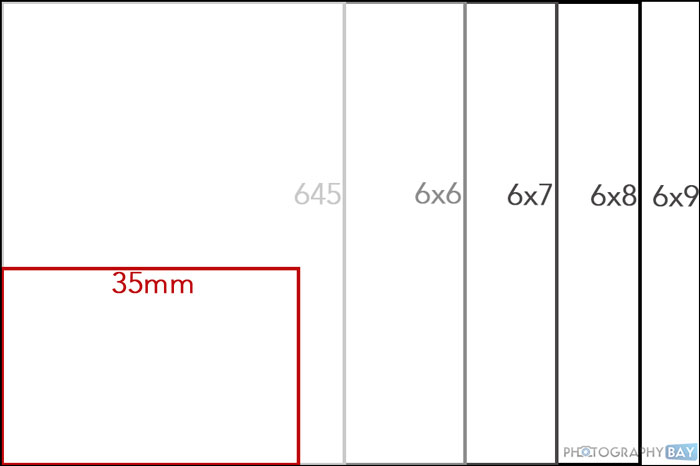
Below, you will find a crop factor for all of the popular medium format film ratios using 120/220 roll film. These crop factors are based on a diagonal measurement of the negative, so some of the odd ratios may be a little off if you are comparing them purely to the native 2:3 aspect ratio of 35mm film. The goal, however, is to provide a reasonably accurate and consistent measurement in order to identify “equivalent focal lengths” to your full frame lenses that you know by heart.
645 Crop Factor = 0.62
The 645 format frame is 56mm x 41.5mm. It measures 69.7mm diagonally.
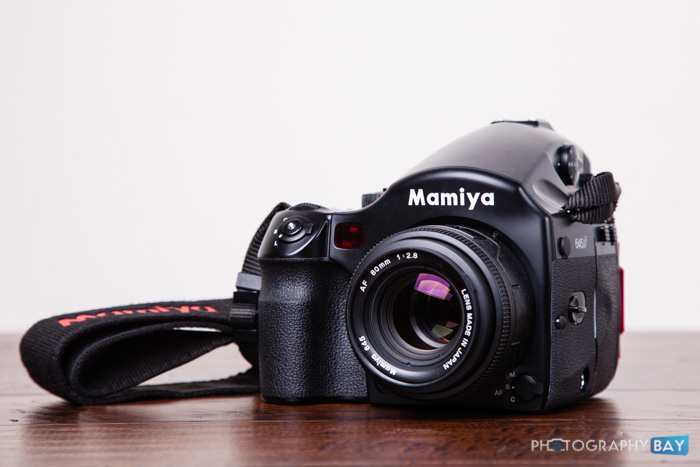
The 645 format is the generally the smallest frame size you will see used on 120 roll film. Popular 645 format cameras include the Mamiya M645, 645E, 645 Pro and the 645 AF series; the Pentax 645 and 645N; the Bronica RF645 and ETR models; the Contax 645; the Hasselblad H1 and H2; and the Fujifilm GA645, GS645 and GX645 models.
Popular 645 format lenses and their 35mm equivalents include the following.
| 645 Lens | 35mm Equivalent |
| 45mm | 28mm |
| 55mm | 34mm |
| 60mm | 37mm |
| 55-110mm zoom | 34-68mm |
| 80mm (normal angle of view) | 50mm |
| 80-160mm | 50-100mm |
| 100mm | 62mm |
| 120mm | 75mm |
| 150mm | 93mm |
| 200mm | 124mm |
6 x 6 Crop Factor = 0.55
The 6 x 6 format frame is 56mm x 56mm. It measures 79.2mm diagonally.
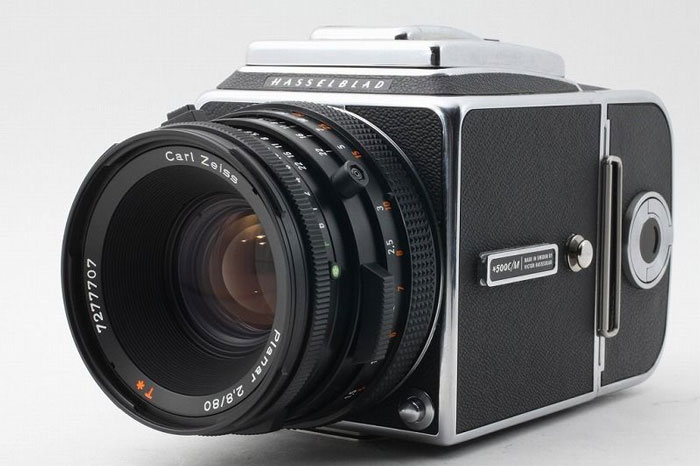
As you can easily deduce, the 6 x 6 format is a square format, or a 1:1 ratio. Square photos were cool well before Instagram and remains a very popular format for 120 roll film.
Popular 6 x 6 cameras include the Hasselblad 500 series (aka V System); Bronica SQ series; Mamiya 6 rangefinders and C330 TLR; Rolleiflex 6008 and SL66 models; along with many other used 6 x 6 cameras available at bargain prices today.
Popular 6 x 6 format lenses and their 35mm equivalents include the following.
| 6 x 6 Lens | 35mm Equivalent |
| 30mm | 17mm |
| 40mm | 22mm |
| 50mm | 28mm |
| 60mm | 33mm |
| 65mm | 36mm |
| 75mm | 41mm |
| 80mm (normal angle of view) | 44mm |
| 120mm | 66mm |
| 150mm | 83mm |
| 180mm | 99mm |
| 200mm | 110mm |
6 x 7 Crop Factor = 0.5
The 6 x 7 format frame is 56mm x 67mm. It measures 87.3mm diagonally.
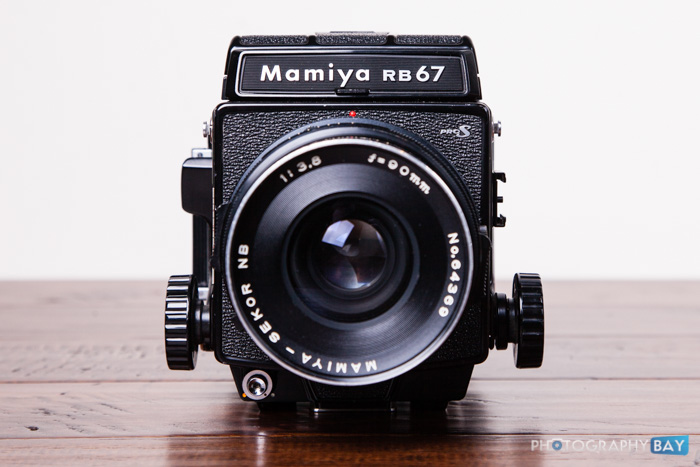
The 6 x 7 format is the easiest crop factor to calculate at roughly half the equivalent focal length for full frame cameras. Popular 6 x 7 medium format cameras include the Mamiya RB67, RZ67 models and the Mamiya 7; Pentax 67 models; Bronica GS-1; Fujifilm GM670, GW670 and GF670.
Popular 6 x 7 format lenses and their 35mm equivalents include the following.
| 6 x 7 Lens | 35mm Equivalent |
| 45mm | 23mm |
| 50mm | 25mm |
| 65mm | 33mm |
| 90mm (normal angle of view) | 45mm |
| 105mm | 53mm |
| 127mm | 64mm |
| 165mm | 83mm |
| 180mm | 90mm |
| 200mm | 100mm |
| 250mm | 125mm |
| 360mm | 180mm |
6 x 8 Crop Factor = 0.45
The 6 x 8 format frame is 56mm x 77mm. It measures 95.2mm diagonally.
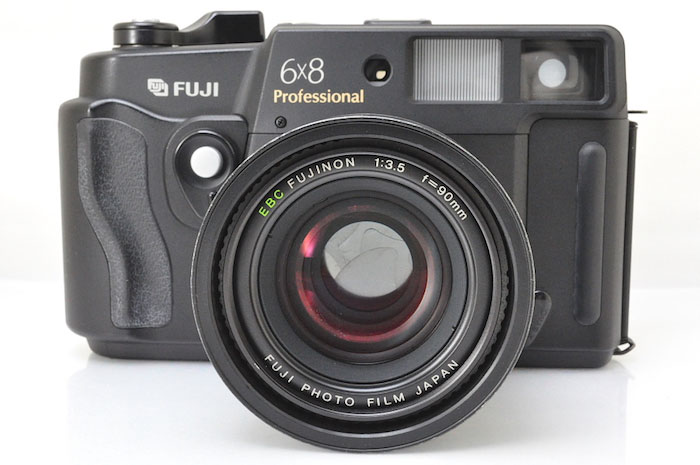
The 6 x 8 format has the same 3:4 aspect ratio found in Micro Four Thirds cameras. Of course, the actual frame size is much large than those compact digital cameras and it is a rarer option for medium format manufacturers. Popular 6 x 8 medium format cameras are pretty much limited to the Fujifilm GX-680, GW680 and GSW680. 6 x 8 format backs are also a somewhat common and easy to find option for the Mamiya RB67.
Popular 6 x 8 format lenses and their 35mm equivalents include the following.
| 6 x 8 Lens | 35mm Equivalent |
| 65mm (GSW680) | 30mm |
| 90mm (GW680) | 40mm |
| 100mm (GX-680 kit lens) | 45mm |
| 125mm | 56mm |
| 135mm | 60mm |
| 150mm | 68mm |
| 180mm | 81mm |
| 190mm | 85mm |
| 210mm | 95mm |
6 x 9 Crop Factor = 0.43
The 6 x 9 format frame is 56mm x 84mm. It measures 101mm diagonally.
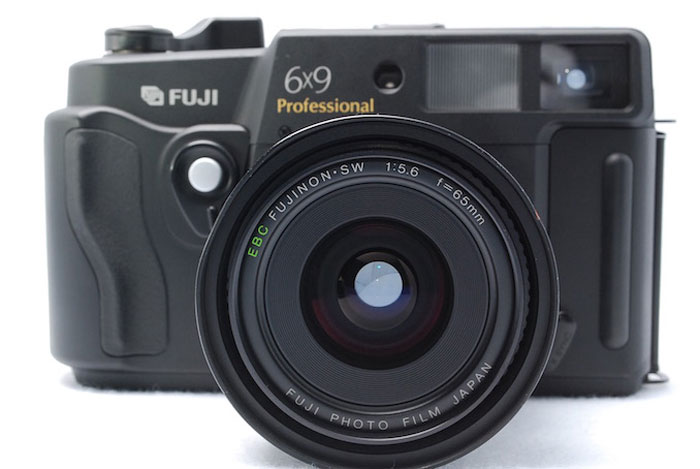
The 6 x 9 format has the same aspect ratio of 2:3 found in 35mm film and full frame image sensors. It is about as wide as you see before moving into panoramic cameras, which I’m not covering for the purposes of crop factor comparisons. Popular 6 x 9 medium format cameras include the Fuji GW690, GSW690 and GL690; Mamiya Univeral Press and Voigtlander Bessa.
Popular 6 x 9 format lenses and their 35mm equivalents include the following.
| 6 x 9 Lens | 35mm Equivalent |
| 65mm (GSW690) | 28mm |
| 90mm (GW690) | 39mm |
| 100mm (GL690) | 43mm |
| 105mm (Bessa) | 45mm |
| 150mm | 65mm |
Copyright/DMCA Notice: The RSS entry was originally published on Photography Bay. RSSID#794326